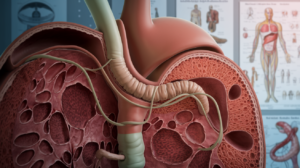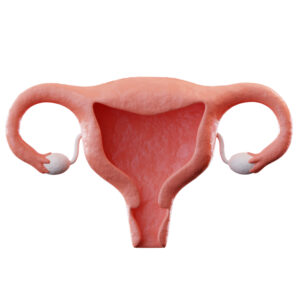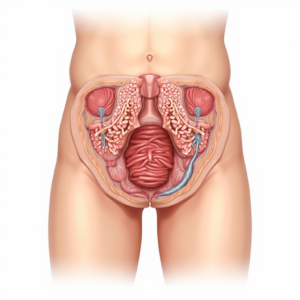Ever wondered if a wound can form between two body parts that shouldn’t be connected? That’s essentially what a fistula is, and it’s way more common than you might think – affecting millions worldwide, especially after childbirth or surgery.
Let me save you hours of confusing medical websites. I’ll break down exactly what fistulas are, why they happen, and the warning signs your body might be developing one.
Understanding fistulas (abnormal connections between organs or vessels) early can prevent serious complications and lengthy hospital stays. The symptoms vary wildly depending on location, from persistent pain to unusual drainage.
But here’s what your regular doctor’s visit might not tell you about fistulas – the surprising everyday habits that could be making your condition worse without you even realizing it.
Understanding Fistulas: What They Really Are

Clear Definition and Medical Explanation
A fistula isn’t something most people talk about at dinner parties, but it’s worth understanding. Simply put, a fistula is an abnormal connection or tunnel that forms between two organs or vessels that don’t normally connect. Think of it like an unwanted secret passage in your body.
These tunnels can develop between almost any parts of your body – from your intestines to your skin, between blood vessels, or connecting various organs. The problem? They allow things like intestinal contents, feces, or other fluids to divert from their normal path, often causing inflammation, infection, and a host of uncomfortable symptoms.
Fistulas develop when tissue breaks down due to injury, surgery, infection, or underlying conditions like Crohn’s disease. Once formed, they rarely heal on their own, usually requiring medical intervention.
Different Types of Fistulas Explained
Fistulas come in several “flavors” depending on where they show up:
- Anal fistulas: Connect the anal canal to the skin around the anus. These are often painful and can cause drainage of pus or stool.
- Arteriovenous fistulas: Abnormal connections between arteries and veins, sometimes created intentionally for dialysis access.
- Obstetric fistulas: Develop during childbirth complications, creating passages between the birth canal and bladder or rectum.
- Digestive fistulas: Form between different parts of the digestive tract or connect the digestive system to other organs or skin.
- Dental fistulas: Connect tooth infections to the gums or face.
How Common Are Fistulas?
The frequency of fistulas depends entirely on which type we’re talking about. Anal fistulas affect about 10 in 100,000 people annually, with men twice as likely to develop them as women.
Obstetric fistulas are rare in developed countries but remain a significant health issue in developing regions with limited access to emergency obstetric care. In parts of sub-Saharan Africa and Asia, these affect 50,000 to 100,000 women each year.
People with certain conditions face higher risks:
- Crohn’s disease patients have a 35% lifetime risk of developing fistulas
- 25% of people with diverticulitis may develop fistulas
- After certain surgeries, fistula rates range from 1-20% depending on the procedure
Debunking Common Misconceptions
Many people have the wrong idea about fistulas. Let’s clear things up:
Myth: Fistulas only happen to older people.
Reality: They can affect anyone of any age, including children and young adults.
Myth: Fistulas always heal on their own.
Reality: Most fistulas require medical or surgical treatment and won’t resolve without intervention.
Myth: Fistulas are always caused by poor hygiene.
Reality: While infections can contribute, many fistulas result from underlying medical conditions, injuries, or surgical complications.
Myth: All fistulas are painful.
Reality: Some fistulas cause little to no pain, making them harder to detect until other symptoms appear.
Causes Behind Fistula Development
A. Underlying Medical Conditions That Trigger Fistulas
Ever wonder why fistulas form in the first place? Your body typically doesn’t create abnormal connections between organs without reason. Several medical conditions set the stage for fistula development.
Crohn’s disease tops the list. This inflammatory condition can literally eat through your intestinal walls, creating unwanted pathways to nearby organs or even your skin.
Diverticulitis is another common culprit. Those little pouches that form in your digestive tract? When they get infected and burst, fistulas might develop as your body tries to deal with the infection.
Cancer doesn’t just grow tumors – it can erode tissue boundaries too. As tumors invade surrounding tissues, they sometimes create fistulous connections between structures that should remain separate.
Infections like tuberculosis or certain sexually transmitted infections can progressively damage tissue, eventually creating abnormal passages between organs.
B. Surgical Complications and Post-Operative Risks
Surgery saved your life, but now you’re dealing with a fistula? Unfortunately, it happens.
Anastomotic leaks are the surgical nightmare nobody wants. When surgeons reconnect sections of intestine, these connections sometimes leak, forming fistulas as your body tries to channel the leaking contents.
Radiation therapy can weaken tissues months or even years after treatment, making them more susceptible to fistula formation after surgery.
Poor wound healing – often seen in people with diabetes, malnutrition, or those taking certain medications – significantly increases fistula risk after surgical procedures.
Foreign body reactions to surgical materials like sutures or mesh can trigger inflammation that gradually leads to fistula development.
C. Inflammatory Bowel Diseases and Their Connection
Inflammatory bowel diseases (IBDs) and fistulas go hand in hand. The connection is no coincidence.
Crohn’s disease is the IBD most notorious for causing fistulas. About 35% of Crohn’s patients develop fistulas at some point. The chronic inflammation progressively damages all layers of the intestinal wall, creating paths of least resistance.
Ulcerative colitis, though less commonly associated with fistulas than Crohn’s, can still lead to their development, particularly after surgical interventions.
The medications used to treat IBDs present a double-edged sword. While they control inflammation, some immunosuppressants may impair healing and actually increase fistula risk in certain patients.
The longer you’ve had IBD, the higher your fistula risk becomes – it’s a cumulative damage situation.
D. Injuries and Trauma as Potential Causes
Trauma doesn’t always heal without complications. Fistulas can be an unwanted souvenir from serious injuries.
Penetrating abdominal injuries – whether from accidents, violence, or even childbirth complications – can create direct channels between organs that persist during healing.
Crush injuries affect blood supply to tissues. Without adequate blood flow, tissues die and create gaps that may develop into fistulas.
Radiation injury, though not traumatic in the conventional sense, damages tissues in ways that can lead to fistula formation months or years after treatment.
Burns, especially deep ones, destroy tissue barriers and can lead to fistula development during the healing process.
E. Genetic Factors That May Increase Risk
Your genes might be setting you up for fistula troubles before any symptoms appear.
Certain genetic variants associated with immune system regulation have been linked to higher fistula risk, especially in people with Crohn’s disease.
Family history matters – if your close relatives have developed fistulas, especially with conditions like Crohn’s disease, your risk is likely elevated.
Congenital abnormalities, present from birth, sometimes include tissue weaknesses or connections that predispose you to fistula development later in life.
Genetic conditions affecting connective tissue, like Ehlers-Danlos syndrome, create weakened tissue boundaries that may be more prone to fistula formation when other risk factors are present.
Recognizing Fistula Symptoms
Early Warning Signs You Shouldn’t Ignore
Living with a fistula isn’t something anyone plans for. The tricky part? Catching it early before it becomes a bigger problem. Some people notice something’s off but brush it aside, hoping it’ll just disappear on its own. Bad move.
Watch out for unexplained fever that comes and goes. Your body’s basically waving a red flag saying “hey, something’s not right here.” Unusual tenderness or swelling around the affected area is another signal you shouldn’t brush off.
Many people also report a general feeling of being unwell or fatigue that doesn’t improve with rest. This isn’t just being tired—it’s your body working overtime to deal with the abnormal connection between organs or vessels.
Another telltale sign? Recurrent infections in the same area. If you’ve had multiple UTIs, skin infections, or digestive issues that keep coming back no matter what treatment you try, a fistula might be the culprit hiding beneath the surface.
Pain Patterns and Discomfort Levels
The pain from a fistula isn’t like your average headache or muscle strain. It’s got its own personality, and it can be quite the troublemaker.
For some, it’s a constant, dull ache that never fully goes away. Others experience sharp, shooting pains that seem to come out of nowhere. What makes fistula pain particularly frustrating is how it can change throughout the day or with different activities.
Anal fistulas typically cause pain when sitting or during bowel movements. The pain might ease temporarily then flare up again without warning.
Abdominal fistulas often create discomfort that worsens after eating or drinking.
Vaginal fistulas can cause pain during intercourse or while urinating.
The intensity ranges widely too – from mildly annoying to completely debilitating. Some people rate their pain as a 3 on the pain scale, while others hit a solid 9 or 10 during flare-ups.
If your pain follows predictable patterns tied to specific activities, that’s information your doctor needs to know.
Drainage and Discharge: What’s Normal vs. Concerning
Discharge from a fistula isn’t just gross—it’s a critical symptom that tells you a lot about what’s going on.
Normal drainage from healing wounds should be clear or slightly yellow and minimal. But fistula discharge is a whole different ball game. It’s often persistent, sometimes foul-smelling, and can contain blood, pus, or even fecal matter depending on the fistula type.
The color matters too:
- Clear or straw-colored: Might be serum or lymphatic fluid
- Cloudy white or yellow: Usually indicates infection
- Green or brown: Could contain digestive contents (major red flag!)
- Bloody or pink-tinged: Shows blood vessel involvement
Many people notice the discharge stains their underwear or requires them to wear pads. That’s not normal and definitely warrants medical attention.
The smell can be distinctive too—often described as “sickly sweet” or downright foul. If people can smell it despite your best hygiene efforts, that’s your body screaming for medical help.
System-Specific Symptoms Based on Fistula Location
The location of your fistula determines which unique symptoms you’ll experience. Your body has a way of telling you exactly where the problem lies if you know what to look for.
With gastrointestinal fistulas, you might notice food particles in unusual places. For example, an enterocutaneous fistula (connecting bowel to skin) might cause partially digested food to appear at an opening on your abdomen. You could also experience diarrhea, malnutrition, or dehydration from nutrients not being properly absorbed.
Urinary tract fistulas bring their own special kind of misery. Imagine passing gas or fecal matter when you urinate, or having urine leak from your vagina or rectum. These are telltale signs of connections between your urinary system and other organs.
Arteriovenous fistulas often cause visible symptoms like swollen, twisted veins near the connection point. Your heart works harder, potentially leading to shortness of breath or heart failure symptoms if left untreated.
Anal fistulas typically come with recurring abscesses, pain during bowel movements, and persistent drainage from an opening near the anus.
The intensity and combination of these symptoms help doctors pinpoint exactly what type of fistula you’re dealing with.
Diagnostic Process: What to Expect
Initial Consultation and Physical Examination
Finding out you might have a fistula can be scary, but knowing what to expect during diagnosis can help ease some anxiety.
When you first visit your doctor with symptoms that might suggest a fistula, they’ll start with a thorough conversation about your medical history. They’ll ask about your symptoms – when they started, how severe they are, and what makes them better or worse. Don’t hold back on details here. Even things that seem embarrassing or unimportant could provide crucial clues.
Next comes the physical exam. Depending on the suspected fistula location, this might include:
- Visual inspection of the affected area
- Gentle palpation (touching) to detect abnormal connections
- For anal fistulas, a digital rectal examination
- For vaginal fistulas, a pelvic examination
Your doctor may apply gentle pressure around the suspected fistula to check if any drainage appears. While these exams aren’t exactly fun, they’re typically quick and your doctor will work to minimize discomfort.
Imaging Tests That Help Confirm Diagnosis
After your initial examination, your doctor will likely order imaging tests to get a clearer picture of what’s happening inside your body. These tests are painless but incredibly revealing.
Most fistula cases require one or more of these imaging methods:
- Ultrasound: Often the first imaging test used. It’s quick, radiation-free, and can show fluid collections and abnormal connections between organs.
- MRI (Magnetic Resonance Imaging): The gold standard for fistula diagnosis. MRIs provide detailed images that show the exact path and extent of fistula tracts, especially useful for perianal fistulas.
- CT Scan: Particularly helpful for detecting fistulas in the abdomen or pelvis. CT scans can show both the fistula and any surrounding inflammation.
- Fistulogram: A specialized X-ray where contrast dye is injected into the fistula opening to highlight its path and connections.
Laboratory Tests and Their Role
Blood work and other lab tests play a supporting role in fistula diagnosis. While they can’t confirm a fistula directly, they provide crucial information about underlying causes and your overall health status.
Common laboratory tests include:
- Complete Blood Count (CBC): Checks for signs of infection or inflammation
- C-reactive protein and ESR: Measures inflammation levels in your body
- Culture and sensitivity testing: If drainage is present, samples can identify specific bacteria causing infection
- Tests for underlying conditions: Including tests for Crohn’s disease, tuberculosis, or diabetes depending on your risk factors
These test results help your doctor develop a comprehensive treatment plan that addresses not just the fistula but any contributing conditions.
Specialized Procedures for Complex Cases
Some fistulas require more advanced diagnostic techniques to fully understand their structure and plan effective treatment.
For complicated cases, your doctor might recommend:
- Endoscopy: Using a thin, flexible tube with a camera to visualize the inside of organs like the colon or bladder
- Cystoscopy: Specifically for examining the bladder when urinary fistulas are suspected
- Colonoscopy: To check for intestinal inflammation or other abnormalities that might cause fistulas
- Endoanal/Endorectal Ultrasound: A specialized ultrasound probe inserted into the rectum for detailed images of anal fistulas
- Blue Dye Test: For suspected vaginal fistulas, where blue dye is placed in the bladder to check for leakage into the vagina
These specialized tests are typically performed by specialists and might require some preparation beforehand. Don’t worry – your doctor will explain exactly what you need to do.
Treatment Options for Fistulas
Conservative Management Approaches
Not every fistula needs surgery right away. Sometimes, doctors take a “wait and see” approach, especially for small fistulas that might heal on their own.
Think of conservative management as giving your body a chance to fix itself. This typically includes:
- Rest and modified activities to reduce pressure on the affected area
- Proper hygiene practices to prevent infection
- Sitz baths several times daily to keep the area clean
- Drainage management with absorbent pads or collection devices
- Nutritional support to promote healing
For anal fistulas, something as simple as warm sitz baths can provide tremendous relief while your body works its magic. For more complex fistulas like those associated with Crohn’s disease, conservative management might be the first step before moving to other treatments.
Medication Therapies and Their Effectiveness
Medications play a crucial role in managing fistulas, particularly when infection is involved or for those caused by underlying conditions.
The medicine cabinet for fistula treatment typically includes:
Antibiotics – These warriors fight infection and can sometimes help small fistulas heal. Your doctor might prescribe metronidazole or ciprofloxacin for bacterial infections in the area.
Anti-inflammatory drugs – For fistulas related to conditions like Crohn’s disease, medications that reduce inflammation can be game-changers. Biologics like infliximab have shown promising results in closing fistulas in about 30% of Crohn’s patients.
Pain medications – Let’s be honest – fistulas hurt. Over-the-counter pain relievers can help manage discomfort during healing.
Immunomodulators – Medications like azathioprine or 6-mercaptopurine might be prescribed for fistulas related to autoimmune conditions.
The effectiveness of medication varies wildly depending on the fistula type, location, and underlying cause. What works miracles for one person might barely move the needle for another.
Surgical Interventions: When They’re Necessary
Sometimes, surgery is the only real solution for fistulas. Doctors typically recommend surgical intervention when:
- Conservative treatments haven’t worked
- The fistula is causing significant symptoms
- There’s risk of serious complications
- The fistula is unlikely to heal on its own
Surgical options range from minimally invasive to more complex procedures:
Fistulotomy – The most common procedure where the fistula tract is opened, cleaned out, and left to heal from the inside out. Works best for simple, superficial fistulas.
Seton placement – A surgical thread is placed through the fistula to keep it open for drainage while gradually healing. This technique is particularly useful for complex anal fistulas to preserve sphincter function.
Advancement flap procedures – Healthy tissue is used to cover and close the internal opening of the fistula.
LIFT procedure (Ligation of Intersphincteric Fistula Tract) – A newer technique that preserves sphincter function while closing the fistula tract.
Fibrin glue/collagen plugs – These materials can be used to seal the fistula tract with minimal invasion.
The success rates for surgical interventions range from 50-90%, depending on the technique and fistula complexity.
Emerging Treatment Technologies
The medical world doesn’t stand still, and fistula treatment is benefiting from some exciting innovations:
Stem cell therapy – Early research shows promise in using a patient’s own stem cells to heal complex fistulas, especially in Crohn’s disease. Studies have shown healing rates of up to 50% in cases where traditional methods failed.
Laser treatments – FiLaC (Fistula Laser Closure) uses laser energy to destroy the fistula tract while preserving surrounding tissue. It’s gaining popularity for its minimal invasiveness and sphincter preservation.
Video-assisted anal fistula treatment (VAAFT) – This endoscopic technique allows surgeons to see inside the fistula tract and treat it from within, reducing damage to surrounding tissue.
Bioengineered tissue grafts – These lab-grown tissues can be used to close fistula openings with potentially better results than traditional methods.
OTSC Proctology system – A clip-based closure system that’s showing promise for certain types of fistulas.
While these treatments might sound like science fiction, they’re increasingly available at specialized centers. Ask your doctor if any might be right for you.
Recovery Timeline Expectations
Recovery from fistula treatment isn’t a sprint—it’s definitely a marathon. Setting realistic expectations can help you mentally prepare for the journey ahead.
For conservative management and medication therapy:
- Initial improvement: 2-4 weeks
- Complete healing (when successful): 1-6 months
For surgical interventions:
- Hospital stay: Usually outpatient to 2 days for most procedures
- Initial recovery period: 1-2 weeks of limited activity
- Return to work: 1-4 weeks depending on job demands and procedure type
- Complete healing: 6 weeks to several months
The healing timeline depends heavily on:
- The type and location of the fistula
- The treatment method used
- Your overall health and immune status
- Whether you have underlying conditions like Crohn’s disease
- How well you follow post-treatment care instructions
Healing setbacks happen. About 7-40% of patients experience recurrence, particularly with complex fistulas. This doesn’t mean treatment failed—it might just mean a different approach is needed.
Your best bet? Follow your doctor’s instructions to the letter, keep all follow-up appointments, and be patient with your body as it heals.
When to Seek Immediate Medical Attention
Red Flag Symptoms Requiring Emergency Care
Don’t mess around with certain fistula symptoms. If you spot any of these warning signs, get to the ER right away:
- Severe, uncontrollable pain that’s different from your usual fistula discomfort
- Heavy bleeding from the fistula opening that won’t stop
- High fever (over 101°F or 38.3°C) with chills and sweats
- Rapid heartbeat coupled with feeling confused or extremely weak
- Foul-smelling discharge with increased swelling, redness, and warmth
- Difficulty breathing or chest pain, especially with anal or rectovaginal fistulas
These symptoms often signal infection has spread beyond the fistula site and could be life-threatening without immediate treatment.
Complications That Can Develop
Fistulas aren’t just painful—they can lead to serious problems if left untreated:
Sepsis: The most dangerous complication. Infection enters your bloodstream, potentially causing organ failure and death.
Abscess formation: Pockets of infection that form near the fistula, causing intense pain and requiring drainage.
Malnutrition: Especially with gastrointestinal fistulas that prevent proper absorption of nutrients.
Dehydration: Fluid loss through certain types of fistulas can quickly become dangerous.
Tissue damage: Surrounding healthy tissue gets destroyed as the fistula grows.
Cancer development: Though rare, chronic fistulas (especially anal ones) slightly increase cancer risk in the affected area.
Risk Factors That Warrant Closer Monitoring
Some people need to be extra vigilant about potential fistula complications:
- Diabetics: Poor blood sugar control slows healing and increases infection risk
- Immunocompromised individuals: Those with HIV/AIDS, undergoing chemotherapy, or taking immunosuppressant medications
- Smokers: Tobacco use significantly hampers tissue repair and healing
- Elderly patients: Age-related decreased immune function makes complications more likely
- Individuals with inflammatory bowel disease: Crohn’s disease particularly increases complication risks
- People with poor nutrition status: Inadequate protein and vitamins impair healing
- Those with previous fistula history: Recurrent fistulas often become more complicated
If you fall into any of these categories, work closely with your healthcare provider and don’t ignore even minor changes in your symptoms.
Living With a Fistula: Practical Advice
Daily Management Strategies
Living with a fistula isn’t easy, but with some practical strategies, you can manage your symptoms and improve your quality of life. First, keep the area clean and dry. Use gentle, fragrance-free soaps and pat (don’t rub) the area dry after washing. Many patients find that sitting in warm water for 15-20 minutes a few times a day helps reduce discomfort.
Drainage is often a major concern. Absorbent pads or specialized fistula collection devices can be real game-changers. Talk to your healthcare provider about which options might work best for your specific situation. And don’t forget to change these regularly to prevent skin irritation and infection.
Pain management matters too. Your doctor might recommend over-the-counter pain relievers, but always check before starting any medication. Some people find that applying a clean, warm compress to the area helps ease discomfort.
Planning your day around bathroom access is smart. If you’re heading out, map potential restroom locations ahead of time. Many smartphone apps can help you locate public bathrooms quickly when needed.
Nutritional Considerations and Dietary Adjustments
What you eat can significantly impact fistula symptoms, especially for digestive or anal fistulas. Keeping a food diary helps identify which foods trigger or worsen your symptoms.
Most people with fistulas benefit from:
- Drinking plenty of water to prevent constipation
- Eating high-fiber foods to promote regular bowel movements
- Avoiding spicy, acidic, or gas-producing foods that might irritate the digestive tract
For intestinal fistulas, your doctor might recommend a low-residue diet during flare-ups. This means avoiding high-fiber foods temporarily to reduce bowel activity and give your system a rest.
Some patients need nutritional supplements to make up for nutrients they’re not absorbing properly. Don’t self-diagnose here – work with a registered dietitian who specializes in digestive disorders to create a personalized eating plan.
Physical Activity Guidelines
Physical activity is still important when you have a fistula, but you’ll need to make some adjustments. Low-impact exercises like walking, swimming, and gentle yoga are typically safe options that won’t put pressure on affected areas.
Avoid activities that:
- Create excessive pressure on the abdomen
- Involve heavy lifting
- Cause bouncing or jarring movements
Listen to your body. If an activity causes pain or increases drainage, take a break and try something gentler. Building up your stamina gradually is better than pushing too hard and suffering a setback.
Some people find wearing supportive garments during exercise helps manage discomfort and drainage. Ask your healthcare provider about appropriate options for your specific situation.
Emotional Support and Mental Health Resources
The psychological impact of living with a fistula often gets overlooked, but it’s just as important as physical care. Many patients experience anxiety, depression, or feelings of isolation.
Finding support makes a world of difference. Look into:
- Online support groups specifically for fistula patients
- In-person support meetings (often organized through hospitals)
- One-on-one counseling with a therapist who understands chronic health conditions
Don’t underestimate the power of connecting with others who truly get what you’re going through. Hearing how others manage similar challenges can provide both practical advice and emotional comfort.
If feelings of depression or anxiety are overwhelming, talk to your healthcare provider. They can refer you to mental health professionals who specialize in helping people with chronic medical conditions.
Conclusion
Fistulas may sound intimidating, but with proper understanding and timely medical intervention, they can be effectively managed. Whether you’re experiencing symptoms, have been recently diagnosed, or are supporting someone with a fistula, remember that medical advancements have significantly improved treatment outcomes. From lifestyle adjustments to surgical interventions, numerous options exist to address this condition and improve quality of life.
If you notice any symptoms that might indicate a fistula, don’t hesitate to consult with your healthcare provider. Early diagnosis often leads to simpler treatment and prevents complications. With the right medical team and support system in place, living with or recovering from a fistula becomes a manageable journey. Your health deserves priority—take that first step toward healing today.




